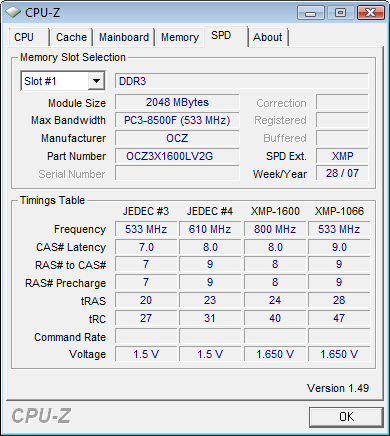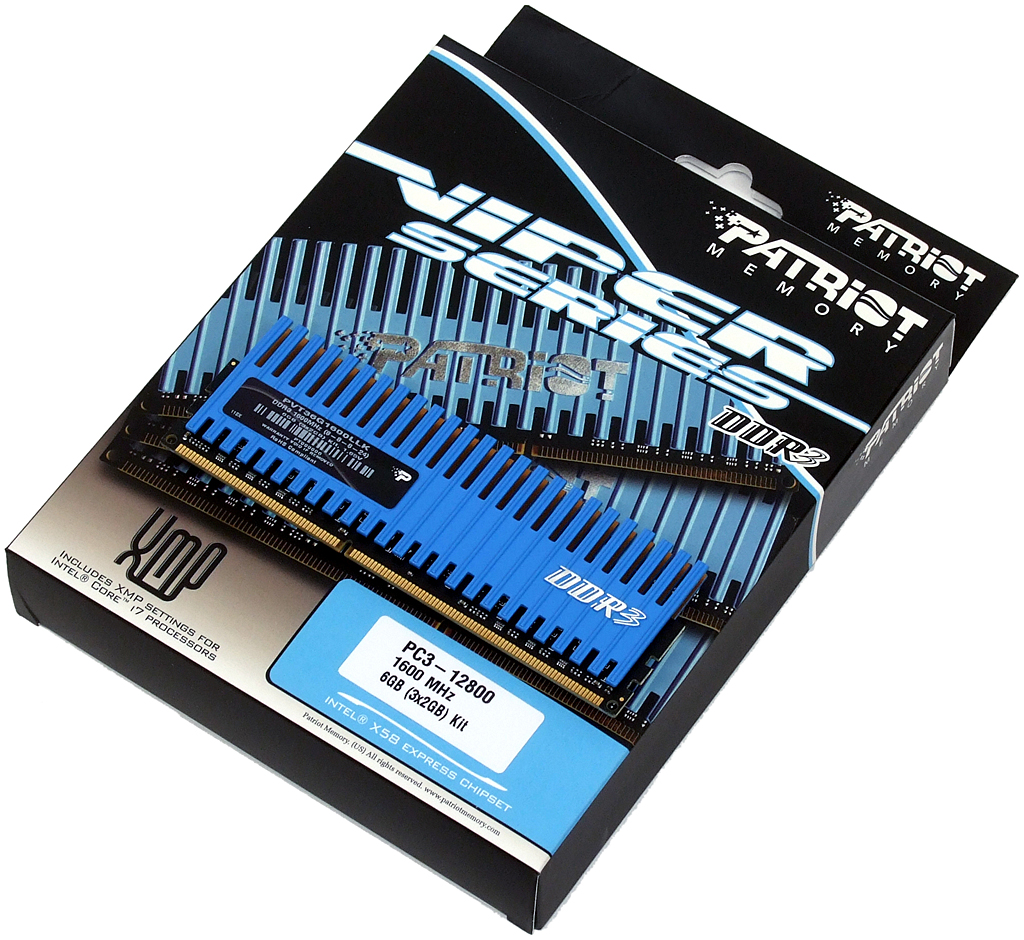Triple-Channel DDR3: 6GB Kit Roundup
OCZ And Patriot Memory
OCZ Intel Extreme DDR3-1600 CAS 8
OCZ’s recent release of DDR3-2000 memory didn’t make it in time for today’s comparison, but the company was able to provide DDR3-1600 with CAS 8-rated timings.
Perforated heat spreaders allow air to circulate over a much wider area, which should help keep this part number OCZ3X1600LV6GK, 6 GB triple-channel kit cool. Then again, the 1.65 V theoretical limit for Intel Core i7 processors doesn’t really create much heat.
A maximum speed for automatic configuration of 610 MHz (DDR3-1220) is among the lowest we’ve seen for DDR3-1600-rated parts, but the modules come with slightly better-than-average CAS 8 automatic timings. An XMP profile for DDR3-1600 CAS 8-8-8-24 at 1.65 V represents the true rating of the kit, but users without XMP-capable motherboards must instead enter all settings manually through BIOS.
OCZ provides a limited lifetime warranty with all memory products.
Patriot Viper DDR3-1600 CAS 8
The "LLK" at the end of Patriot’s part number PVT36G1600LLK accompanies all of its "low-latency kits" and refers to the 8-8-8-24 timings of this 6 GB triple-channel configuration. These good timings won’t break any records, but Patriot could probably win an award for the prettiest heat spreaders. The long cooling fins probably aren’t needed at the rated 1.65 V.
Get Tom's Hardware's best news and in-depth reviews, straight to your inbox.
Patriot Memory, like its competitor OCZ, uses fairly low-speed SPD values for automatic configuration and instead enhances the performance at stock speed using lower latency. Overclocking is required to reach the kit’s rated 8-8-8-24 timings at DDR3-1600 and 1.65 V, but an XMP profile makes setup a little easier for owners of XMP-capable motherboards.
Patriot memory products carry a limited lifetime warranty.
Current page: OCZ And Patriot Memory
Prev Page Kingston And Mushkin Next Page Super Talent And Wintec Industries-
arkadi Grate article!Reply
What was always bothering me about ram reviews is how much memory speed/timing will really impact on system performance. I it is a lot of work I know, but it was never covered.
-
neiroatopelcc From ArticleOf course, we needed a Core i7 processor, but not just any processor would do. While most reviewers are stuck with engineering samples that only support DDR2-800 and DDR2-1066 ratios (3x and 4x base clock, times two), our retail sample supports data rates all the way up to 2,133 MHz (8x base clock, times two).Reply
I could be wrong, but shouldn't it be ddr3 ? I'm not aware of i7 supporting ddr2? -
Crashman neiroatopelccI could be wrong, but shouldn't it be ddr3 ? I'm not aware of i7 supporting ddr2?Reply
Heheh, looks like it's been edited. -
azone I wounder if amd will do quad channel with its am3 motherboards or even dual 128 bit channels. that would be cool. Just something to beats intels triple 64bit channels.Reply -
Gian124 Anyone know the difference between the followingReply
Kingston HyperX T1 Series Kits:
KHX16000D3T1K3/6GX
KHX16000D3ULT1K3/6GX
What does the UL signify?... would it benchmark the same as the former (which was tested in this article)?
-
'The current problem is one of voltage.'Reply
I loled at that.. maybe it's too early in the morning for me :D -
hexploit Interesting just how few people give a damn about DDR3 at this point.Reply
I guess many are a: Not wowed by i7 like they were core2 and b: Laugh and the prices of DDR3 at a time when DDR2 is not only still very fast relative to the software/games on the market but is dirt cheap. -
Crashman Gian124Anyone know the difference between the following Kingston HyperX T1 Series Kits:KHX16000D3T1K3/6GXKHX16000D3ULT1K3/6GXWhat does the UL signify?... would it benchmark the same as the former (which was tested in this article)?Reply
They may have changed the name.




